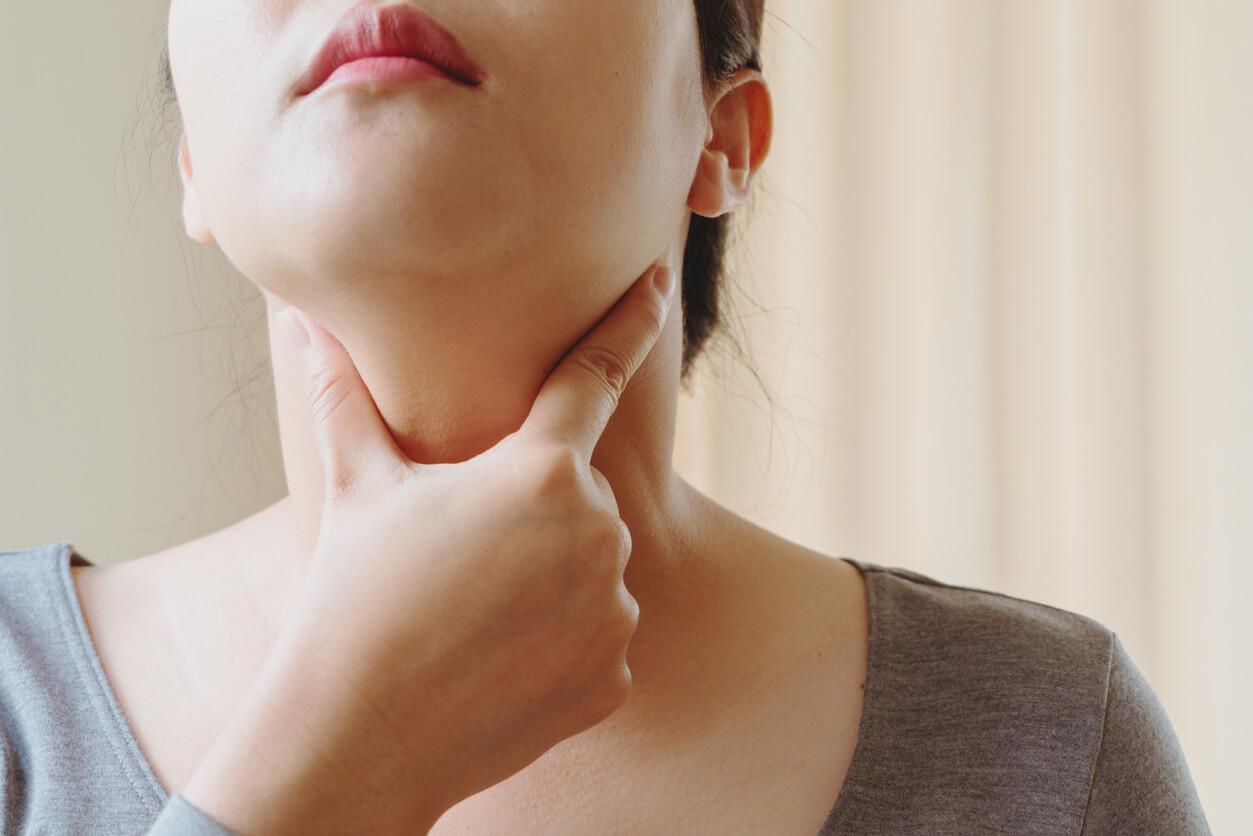Osteoporosis Causes, Risk Factors, Treatment and Prevention
Understanding the common risk factors for osteoporosis
Osteoporosis affects about 10 million Americans. But what causes osteoporosis, and is there anything you can do to treat it?
This article covers the top causes of osteoporosis and the best ways to prevent and treat low bone density.
Basic information about osteoporosis
Osteoporosis is a bone disease that leads to decreased bone health and bone loss. Bone tissue is constantly being broken down and regrown, ensuring strong, healthy bones. However, as you get older, your body gradually starts to lose the ability to grow new bone. Over time, this leads to a loss of bone mass and bone strength, which can put you at a higher risk of fractures (broken bones).
Osteoporosis vs. osteopenia
Osteoporosis is a bone disease that leads to a loss of bone mineral density. Osteopenia is not a disease. Rather, it is a natural state of having low bone mass. In other words, having osteopenia means you have lower bone density than other people.
Symptoms of osteoporosis
Osteoporosis is known as a “silent” disease, meaning that it rarely shows noticeable symptoms in its early stages. This doesn’t mean that there aren’t early warning signs of osteoporosis, though. The loss of bone mineral density may present as:
- A stooped posture
- Back pain
- Loss of an inch or more in height
- High risk of bone fractures (bones that are easily broken)
These symptoms often seem like the natural by-product of aging. However, they can be indicators that you have osteoporosis—which can lead to serious complications if left untreated. Because of this, if you notice these signs of osteoporosis, talk to your healthcare provider. Ask about getting a bone density test for a diagnosis.
Osteoporosis complications
Losing bone density and bone strength leaves you at a greater risk for bone fractures (broken bones). In older adults, osteoporosis is a major risk factor for vertebral fractures (broken bones in the back) and hip fractures (broken hip bones). Hip fractures are especially dangerous, as 14-58% of patients die within a year after breaking a hip bone.
Risk Factors for Osteoporosis
Osteoporosis is caused by bone density loss, which ultimately leads to weakened bones. Unfortunately, a number of factors increase the risk of osteoporosis. The list below represents ten of the most common risk factors that increase the likelihood of developing osteoporosis.
These common risk factors of osteoporosis include:
Age: As you get older, you lose more bone mass and gain it back more slowly. This means that your bones may eventually weaken, increasing your risk of osteoporosis.
Sex: People who are assigned “female” at birth tend to have lower peak bone density and smaller bones than those who are assigned “male” at birth. Postmenopausal women (women who have been through menopause) are at an even greater risk of developing osteoporosis.
Genetics: Like many diseases, having a family history of osteoporosis puts you at greater risk for developing it yourself.
Race: White and Asian men and women have a greater risk of osteoporosis than Black or Hispanic men or women. White men and women are at a greater risk of osteoporosis than Asian men and women.
Hormone levels: Low levels of estrogen in women or low levels of testosterone in men may make you more likely to develop osteoporosis. Men who have reduced levels of testosterone due to prostate cancer treatment or women who have lowered levels of estrogen due to early menopause or breast cancer treatment are at an even greater risk for osteoporosis.
Body size: Men and women with smaller body frames have less bone mass than those with larger bodies. People who are naturally thin or those who have small body sizes are more likely to develop osteoporosis. At the same time, obesity can increase your risk of developing osteoporosis.
Endocrine disorders: Too much thyroid hormone from an overactive thyroid or thyroid medication can lead to bone loss. Similarly, too much parathyroid hormone or overactive adrenal glands can increase your risk of osteoporosis.
Medical conditions: Certain medical conditions can increase your risk of osteoporosis. This includes eating disorders (like anorexia nervosa), gastrointestinal diseases (like inflammatory bowel disease), cancer, autoimmune conditions (like rheumatoid arthritis), and HIV/ AIDS.
Medication use: Certain medications, particularly corticosteroids and glucocorticoids, can lead to bone loss. Long-term use of these drugs may make you more likely to develop osteoporosis.
Diet: A diet with low amounts of calcium and vitamin D, both of which are crucial for healthy bones, can lead to early bone loss and osteoporosis.
Lifestyle causes of osteoporosis
Many of the risk factors listed above are things that you cannot control. You can’t help if you are born with a small body frame or if you develop an endocrine disorder. However, there are a number of controllable factors that can lead to the development of osteoporosis.
These lifestyle factors include:
Alcohol abuse: Studies show that heavy drinking (more than two drinks a day for men or one drink a day for women) can lead to lower bone mineral density and a greater risk of osteoporosis.
Smoking: Smoking tobacco affects your bone health in a number of ways. Both first and second-hand smoke can make you more likely to develop osteoporosis.
Not getting enough exercise: Exercise isn’t just good for your heart and lungs. Physical activity strengthens your bones and encourages the growth of new bone tissue. Plus, a sedentary lifestyle (not getting enough physical activity) actually leads to bone loss. This makes physical activity levels a key factor in the development (or prevention) of osteoporosis.
Osteoporosis treatment
Before treating osteoporosis, providers will order a bone density test. This test assesses your risk of future bone breaks. If your bones have not weakened to the point where this is a serious concern, your provider may recommend lifestyle changes and measures to strengthen your bones. If you are at risk for serious injury, they may recommend medication to prevent further loss of bone mass.
Osteoporosis medication
Bisphosphonates: Bisphosphonates are the most common treatment option for osteoporosis. These drugs slow bone loss, which can lower the risk of broken bones. Alendronate (Fosamax) and risedronate (Actonel) are two commonly prescribed bisphosphonate drugs.
Denosumab: Denosumab is an injectable medication given at a healthcare provider’s office every six months. It is more effective at preventing bone density loss than bisphosphonates but requires injections under the skin.
Hormone therapy: Men and women with osteoporosis caused by low hormone levels may be given hormone replacement supplements to maintain bone density.
Bone-building drugs: Teriparatide (generic for Bonsity and Forteo), Abaloparatide (generic for Tymlos), and Romosozumab (generic for Evenity) are new drugs that stimulate bone growth. These are all injectable medications that are taken over the course of a year or two. Talk to your provider to see if one of these drugs is right for you.
Your healthcare provider may prescribe certain lifestyle changes along with these prescription medication options. For instance, they may prescribe dietary changes to ensure you get enough calcium. They may also direct you to quit smoking and cut down on your drinking to prevent further bone density loss.
Osteoporosis prevention
Living a healthy lifestyle is the best tool for osteoporosis prevention.
Recommendations to help maintain your bone health include:
Don’t smoke: Smoking affects your heart health and lung health and can lead to bone loss; increasing your risk of developing osteoporosis. Quit smoking to prevent a raft of health complications.
Limit your drinking: Some studies show that moderate drinking (2 drinks or less per day for men and one drink or less per day for women) may not seriously affect bone health. However, drinking more than this can put you at greater risk for osteoporosis and other health conditions. Limit your drinking, or quit drinking altogether, to maintain your bone health.
Exercise: Weight-bearing exercises (like walking and jogging) strengthen bones. Couple these exercises with strength training and balance training (which you can do with tai chi) to maintain the bones in your lower body. Keeping a strong lower body can also reduce your risk of falling.
Diet: Perhaps most importantly, eat a diet that is rich in calcium and vitamin D. These substances keep your bones strong and healthy throughout life. Low-fat dairy and fatty fish (like salmon) are great sources of both vitamin D and calcium. You can also get calcium from dark, leafy greens. Consider speaking to a healthcare provider about how to get the right amount of calcium and vitamin D in your diet.
Maintain a healthy weight
How Sesame can help
Catching osteoporosis early can help reduce your risk of broken bones and other complications. If you are beginning to notice early signs of osteoporosis, book an online doctor appointment on Sesame to speak to a healthcare provider about your concerns. Providers on Sesame can give you tips to maintain your bone health and discuss possible treatment options.
Related posts

Health issues that disproportionately affect women include breast cancer, Alzheimer’s disease and osteoporosis. Being aware of the causes, signs and symptoms of these conditions is the first step toward combating them.

Women are more often affected by thyroid problems than men. Learn more about the most common issues, their symptoms, and when you should see a doctor.

Acute and chronic back pain can affect patients’ quality of life, mobility, and long-term health. In this blog article, we’ll dive deep into the primary causes of lower back pain, the symptoms it causes, and the standard treatment options available.

High cholesterol is one of the most prevalent and dangerous medical conditions worldwide. Learn more about high cholesterol, its risks, and how to treat it.

Learn about early arthritis symptoms and possible treatments to manage the chronic condition and improve your quality of life.

Kidney stones cause severe pain and may lead to complications. Learn more about types of kidney stones, their common causes, and how long they take to pass.

Menopause marks the end of a woman’s reproductive years and is a normal part of every menstruating individual's life. It happens when the ovaries' production of reproductive hormones dwindles, permanently ending the menstrual cycle.

Sesame seeds aren’t just good for you; they are also delicious. Learn more about this powerful superfood and how you can use it to improve your health.

Learn about migraines, their triggers, symptoms, and effective treatments to help manage this common yet disabling neurological condition.
